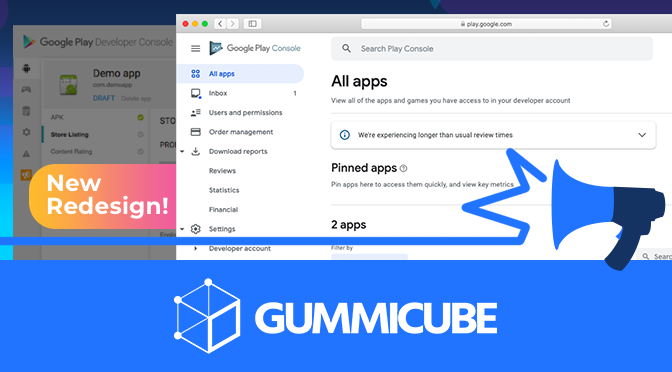
App Store Holiday Schedule 2020
Posted on November 23rd, 2020
When is the App Store Holiday Schedule 2020? Learn about the dates of this year's shutdown and how to prepare.

Mobile app usage and the enormous volume of apps continues to impact
marketing departments and requires mobile marketing and promotion to evolve. We see the impact and change in ASO, messaging, notifications, shopping. Continue to stay on top of trends - specifically related to mobile app marketing, or get passed by those who are embracing mobile and spearheading the related marketing efforts. The end game for mobile marketing and app marketing is not just more users or installs, but improvements in retention and engagement, more social/viral sharing and increased user LTV. Here are four ways you can use expected 2016 trends in mobile marketing to help boost your mobile apps’ ROI.
Greater exposure is a plus for any brand or product. As consumers move from “just” the physical and web to social apps (Facebook, Pinterest), mobile devices and mobile apps - brands are recognizing each of these represent a customer development and acquisition channel. Coordinated messaging and shared attribution across these channels is the goal and challenge of many marketing departments in 2016. Many large retailers have proven the value of a mobile app (or several) for their businesses, and now use the mobile app as the hub for all other marketing efforts - from email marketing to social media properties. Mobile app marketers can capitalize on the trend of omnipresence by ensuring (or advocating) for a mobile-first perspective in all company marketing efforts. Video, platform specific ads and deep linking will play prominent roles here.
If we gave awards to trends, 2015 was the year of the video ad. Video ads made up a third of mobile ad spending. As mobile ad spend increases, video looks to take an outsized share. In many cases, traditional ad budgets are fuelling mobile and digital video as the shift of budgets from print and TV move to mobile. Popular platforms like Twitter, Facebook and Instagram all feature videos prominently in their feeds - which leads to native video advertising opportunities. The traffic on these properties are overwhelmingly skewed to their mobile apps, and even internet video platforms like Youtube are mostly mobile. Mobile app marketers who invest in videos to promote their mobile app can use these videos in Google Play, on Facebook and in mobile ad campaigns (Facebook, Vungle, Ad Colony and others). Apple has several restrictions for app videos as part of an app listing, so videos used for promotion are probably not a good fit for an Apple app listing. Calls to action in videos to install an app, offers of incentives or promoting specific in-app content can now be linked to directly from the videos via deep links.
App deep linking is an attempt to index, surface and connect in-app content not unlike how hyperlinks work for the web. Navigating the internet is easy - everything is connected via links. Mobile has historically been different in that the app listings were “open”, but all in-app content was essentially siloed from indexing and discovery. Deep linking addresses the “silo” problem by allowing developers to tag in-app content, add metadata or even link it to web content. The implications for marketers is enormous as campaigns can now be fully personalized, with targeted ads leading to targeted “landing pages” inside an app as opposed to dropping a new user in the home screen after install. Using deep links in non-app marketing efforts is a great way to ensure user acquisition and increased downloads. A simple use case: adding deep links to specific calls to action in an email marketing campaign encourages subscribers to install your app, view specific content and carry out actions.
Some of these mobile app marketing trends are overlapping, but worth considering separately. Brands will continue to invest in omni channel marketing and attribution, using video ads and deep linking - and increasingly the mobile app is not a stand alone marketing tool but the hub for all digital and physical marketing efforts. We know more people (globally) are increasingly relying on their mobile devices and apps. We have all seen the aggregate stats that mobile surpassed the web in time spent, and more time is spent on mobile devices than watching TV. It has happened so fast, it is hard to even process the implications. What it means to marketing departments is your emails are read on mobile devices, your content is subscribed to and read from mobile devices, and your website is searched for and visited more from mobile devices. Notifications and messaging apps are replacing SMS and email. Online shopping and in-store shopping are now not mutually exclusive. The app stores and digital assistants like the new Spotlight (iOS 9), Siri, and Google M are replacing web search. A mobile app is your chance to be in the pocket of your customers and prospects, to send personalized notifications and special offers. The significant trend across all of marketing is the mobile app as the hub to everything else you do both online and off.

When is the App Store Holiday Schedule 2020? Learn about the dates of this year's shutdown and how to prepare.

Apple's App Store Guidelines have strict privacy requirements. Developers now must provide information to users on the App Store listing regarding the data they access.

The Google Play Developer Console has been updated with a new design and adjusted tools. What's different, and how will it impact App Store Optimization?